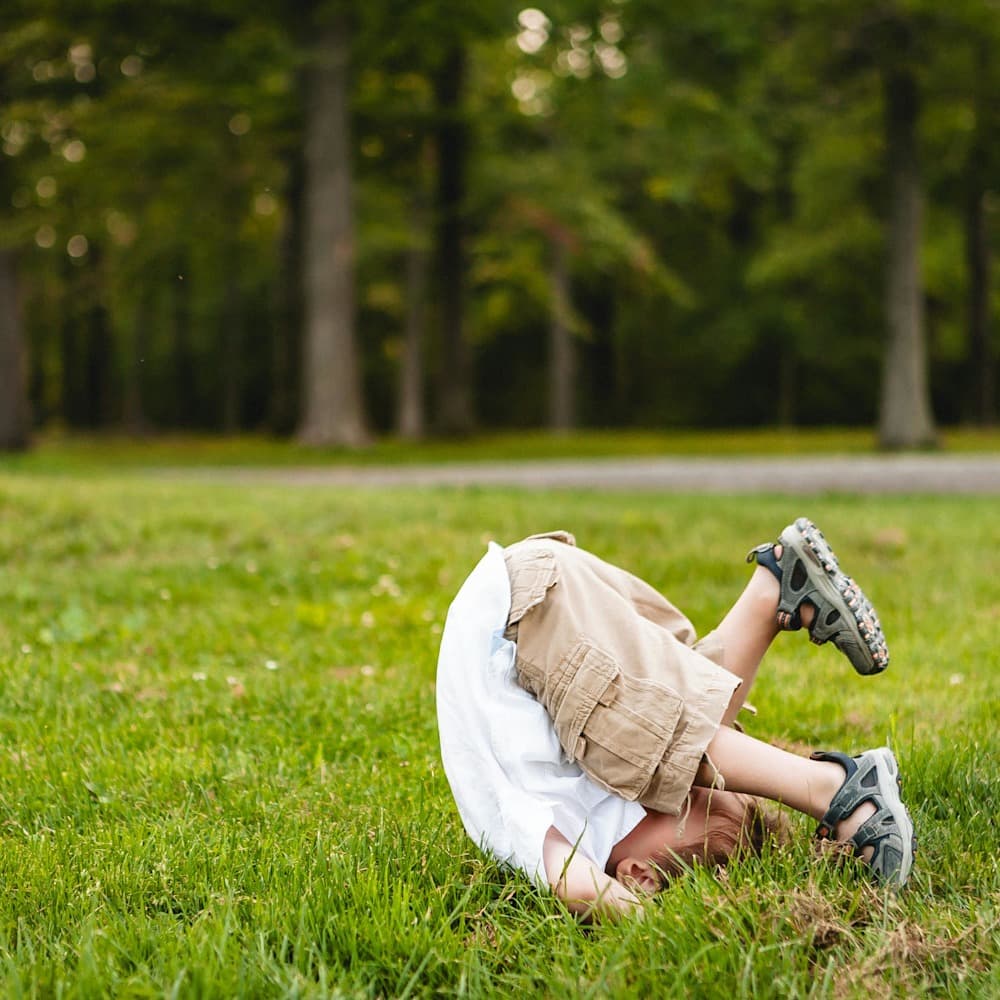Could it be ADHD? Let's talk about it.

By Brightline, Oct 30, 2025
Could it be ADHD? Let's talk about it.
Kids are bursting with energy and wild ideas — that’s what makes them amazing. A lemonade stand in the middle of winter? Sure! Building a blanket fort instead of doing homework? Why not!
But when that energy starts to go into overdrive — when focus disappears, responsibilities slip, and impulsive behavior takes center stage — it might be something more than just “being a child.”
That’s where Attention-Deficit Hyperactivity Disorder (ADHD) comes in. It’s one of the most common childhood behavioral health conditions, affecting nearly 1 in 10 kids and teens in the U.S.
Whether you’re just starting to wonder if your child might have ADHD or you’re looking for better ways to support them after a diagnosis, here’s what every parent should know.
What is ADHD, really?
Like most conditions, ADHD isn’t one-size-fits-all. It’s a mix of traits that fall into two main categories: inattention and hyperactivity/impulsivity.
Kids with inattentive ADHD might:
Get easily distracted or lose track of what they’re doing
Struggle to start or finish projects
Forget things (even classroom rules they’ve heard a hundred times)
Seem like they’re daydreaming — or that they’re hyper-focused on things like video games
Kids with hyperactive/impulsive ADHD might:
Fidget constantly or have trouble staying seated
Talk non-stop or interrupt others
Act before thinking through the consequences
Have a hard time waiting their turn or sitting still in class
And some kids show both patterns — that’s called combined ADHD.
What causes ADHD?
There isn’t a single cause, but science has given us a few clues.
Genetics matter: ADHD often runs in families.
Brain chemistry plays a role — some kids have fewer neurotransmitters that help regulate attention and movement.
Environmental factors, like early exposure to lead or cigarette smoke, can also increase risk.
Being born prematurely or after a difficult pregnancy may contribute, too.
Some researchers even believe ADHD might once have been a survival advantage — quick thinking and fast reactions can be powerful traits when the world is unpredictable.
How ADHD shows up — and why it’s often missed
ADHD doesn’t look the same for every child. Symptoms can shift by age, gender, and environment. Before we get into the findings though, it’s worth noting that many initial studies on ADHD take a binary approach to gender (studying differences between boys and girls). This excludes gender-expansive young people, who may be diagnosed with ADHD at higher than average rates.
Boys may show more obvious hyperactivity — calling out answers, bouncing out of their seats, or disrupting class.
Girls are more likely to be quietly distracted — missing assignments, forgetting things, or seeming “spacey.”
And because of systemic biases in healthcare, Black and Latinx children are often underdiagnosed with ADHD and overdiagnosed with behavioral disorders.
The truth is: every child deserves a fair, thoughtful evaluation — one that sees their full picture.
Getting a diagnosis: What to expect
There’s no single test for ADHD. Diagnosis takes a comprehensive look at your child’s behavior, development, and environment.
Generally, a diagnostic evaluation by a clinician will:
Review symptoms across home and school
Rule out other conditions like hearing problems, learning differences, or anxiety
Help you understand how your child’s behavior fits into their daily life
It’s a win-win: if your child doesn’t have ADHD, you’ll gain peace of mind. If they do, you’ll finally have a path forward — and real tools to help.
Treatment that works — and lasts
ADHD is lifelong, but with the right care, kids can absolutely thrive.
The best treatment plan usually includes:
Healthy routines: Sleep, nutrition, and physical activity make a big difference
Family support: Parent coaching and training can transform life at home
Therapy: Executive functioning and emotional regulation skills-building support both the child and the parents
Medication (when clinically indicated): Safe and effective for most kids six and up.
School partnerships: From 504 plans to daily check-ins, teamwork helps your child stay on track.
And here’s some inspiration: Olympians Michael Phelps and Simone Biles, actress Emma Watson, and astronaut Scott Kelly all have ADHD. It doesn’t have to be viewed as a limitation — it’s a different way of seeing and doing things.
Brightline is here for you and your child
Parenting a child with ADHD can be overwhelming. Between school challenges, emotional ups and downs, and endless to-do lists, it’s easy to feel like you’re carrying it all. You don’t have to.
At Brightline, we are experts at providing therapy and psychiatry services that specifically support kids and families navigating ADHD. We’ll help your child build focus and confidence — and help you find balance again.